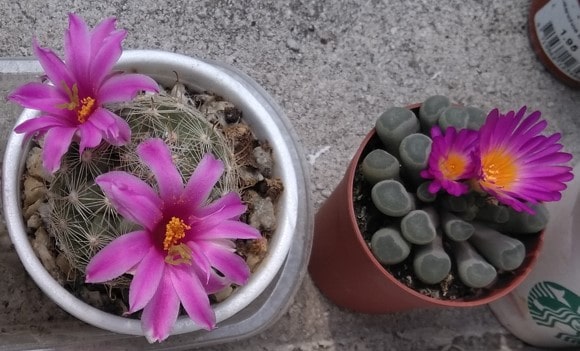Succulent Care 101

Create a garden of brilliance!
Succulents are awesome plants to grow. They are famous for their often unique shape and beautiful flowers. Some are easy to grow, while others are way more difficult. But, with appropriate guidance, it is pretty easy to have an amazing succulent garden or windowsill.
I’ll share some very good tips and tricks that I have learned from experience, or from other excellent gardeners. I have propagated a lot of difficult plants, mostly from seed. I have failed much more than I have succeeded. But every setback has taught me a valuable lesson. My success rate today, even with the more difficult plants and seeds, is very high.
Succulent care guide
This care guide will teach you success with succulent plants, step by step.
You will learn:

Propagate succulents
Succulents are quite easy to propagate from leaves, offsets, or cuttings. You simply take a leaf and carefully stick it partially in the soil, and it will most likely develop roots without much effort.
Cuttings the easiest andf most common way to propagate succulents.
There are four different cuttings:
- Stem cuttings
- Leaf cuttings
- Root cuttings
- Single node cuttings
It is not uncommon to see a dropped leaf next to a plant start to develop roots by itself, with nothing but humidity in the air as a source of nourishment. Mother nature has an impressively powerful will to live and flourish, and always finds a way.
Trim succulents
Sometimes when succulents grow tall they need trimming. The best time to prune succulents is at the beginning of the growing season. They have a positive momentum and will heal quickly. Succulent bushes, trees, and even some fast-growing cacti, like Opuntia and Cholla, need a trim once in a while.
FAQ - Succulent care 101
Most frequent questions and answers
How long do succulents stay alive?
It varies depending if they are annuals, such as Dorotheanthus Bellidiformis (Livingstone Daisy). Or a large cactus, that almost lives forever if the conditions are good.
Is it okay to water plants with ice cubes?
Well, it depends. It allows the water to melt slowly and feed the plant. But it can also be too cold and shock the plant. Generally, using water temperature that is tepid or room temperature can never go wrong.
How do I know if my succulent needs water?
A succulent will typically droop, and look a bit sad along with shriveled leaves. It will usually give you a clear sign.
Do succulents like coffee grounds?
Coffee grounds contain Nitrogen, which is not ideal for succulents. That being said, there are plant owners who feed succulents with coffee consistently with great results. Also, coffee is very acidic, which is perfect for acid-loving plants such as Blueberries, Lily of the valley, Hydrangeas, Azaleas, and Carrots. Meanwhile, succulents and cacti prefer moderate acidity.
Do succulents need regular soil?
Succulents usually prefer well-draining soil that dries out quickly. If their root system remains wet for too long, they are prone to rot and diseases.
Do succulents like small pots
A small pot is usually better than a large pot. Since less amount of soil will dry out quicker. Of course, a very large plant requires a larger pot.
